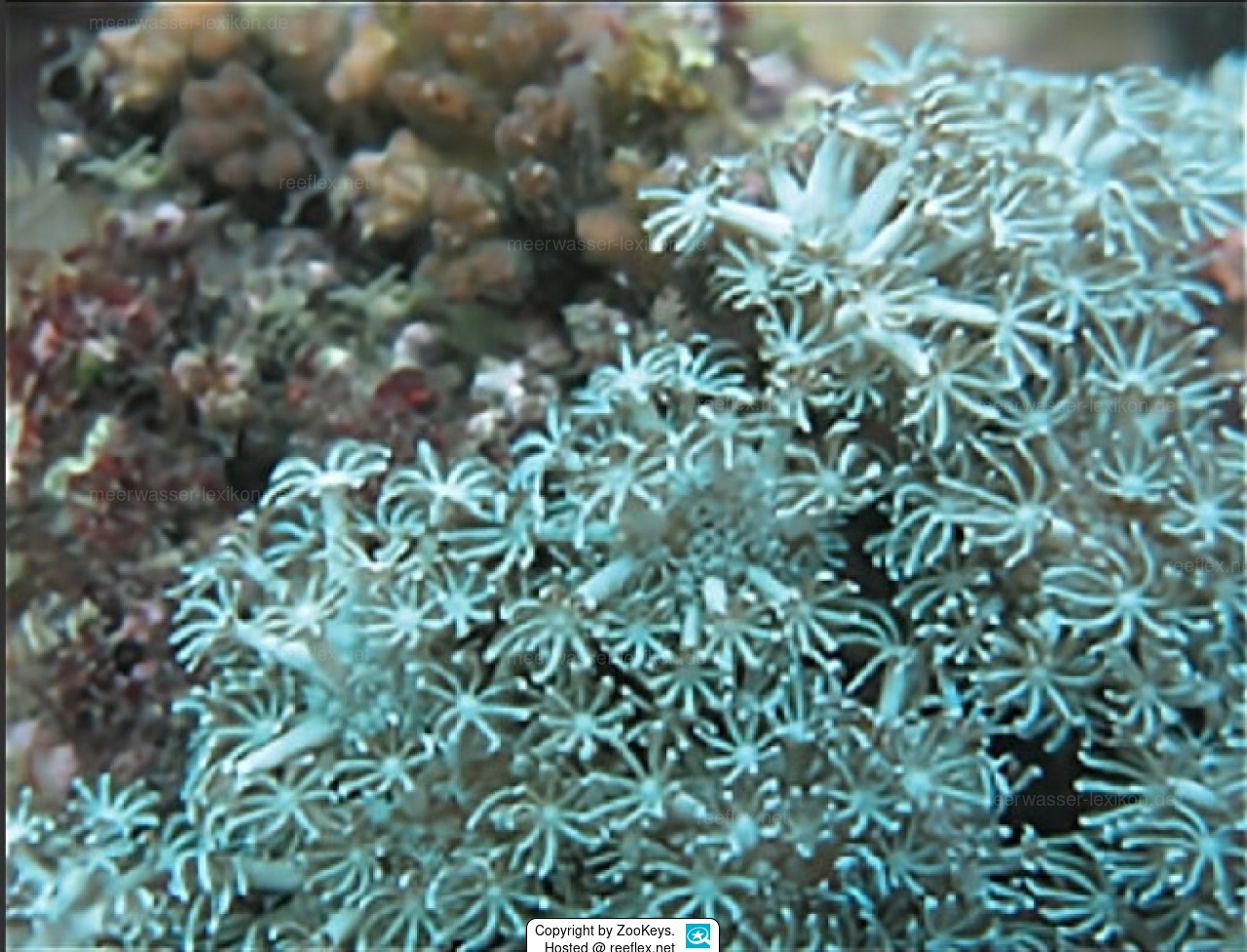Info
Corals of the genus Heteroxenia belong to the Xeniidae family, and species with pumping movements in particular are always very popular corals, despite their tendency towards strong growth and overgrowth.
Heteroxenia medioensis also stands out due to its rhythmic contraction and diastole phases (pulsation).
The coral body of the soft coral is mushroom-shaped with a dome-shaped disk and column, the coral polyps are distributed over the disk, there are no polyps in the body column.
The diameter of the coral body is usually about 3 ~ 6 cm and the height about 2 ~ 3 cm, so the colonies are wider than tall.
The trunk of the living xenia is white and the tentacles of the coral worms have a darker color, usually brown.
The tentacles reach a length of about 5-6 mm long, and there are 2 - 3 rows of pinnae on the upper part of the polyp body, and the pinnae are long and thin.
Literature reference:
Koido T, Imahara Y, Fukami H (2019) High species diversity of the soft coral family Xeniidae (Octocorallia, Alcyonacea) in the temperate region of Japan revealed by morphological and molecular analyses. ZooKeys 862: 1-22. https://doi.org/10.3897/zookeys.862.31979
This is an open access article distributed under the terms of the Creative Commons Attribution License (CC BY 4.0), which permits unrestricted use, distribution, and reproduction in any medium, provided the original author and source are credited.
Heteroxenia medioensis also stands out due to its rhythmic contraction and diastole phases (pulsation).
The coral body of the soft coral is mushroom-shaped with a dome-shaped disk and column, the coral polyps are distributed over the disk, there are no polyps in the body column.
The diameter of the coral body is usually about 3 ~ 6 cm and the height about 2 ~ 3 cm, so the colonies are wider than tall.
The trunk of the living xenia is white and the tentacles of the coral worms have a darker color, usually brown.
The tentacles reach a length of about 5-6 mm long, and there are 2 - 3 rows of pinnae on the upper part of the polyp body, and the pinnae are long and thin.
Literature reference:
Koido T, Imahara Y, Fukami H (2019) High species diversity of the soft coral family Xeniidae (Octocorallia, Alcyonacea) in the temperate region of Japan revealed by morphological and molecular analyses. ZooKeys 862: 1-22. https://doi.org/10.3897/zookeys.862.31979
This is an open access article distributed under the terms of the Creative Commons Attribution License (CC BY 4.0), which permits unrestricted use, distribution, and reproduction in any medium, provided the original author and source are credited.







 ZooKeys
ZooKeys



